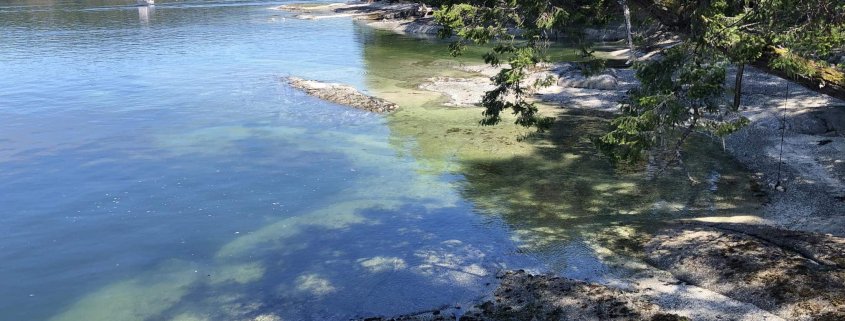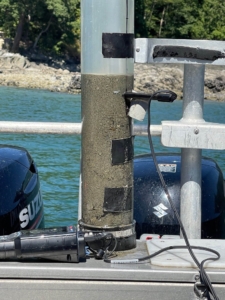
In addition to the core Marine Science Program projects, the Pacific Salmon Foundation supports student research and stewardship group work. Coming together increases what can be achieved for improving the outlook for wild Pacific salmon populations.
Log booms and restoration
There is an extensive history of log storage along the coasts of the Salish Sea. The protected bays and estuaries that are ideal for log booms are also prime locations for eelgrass beds. As such, considerable amounts of valuable salmon habitat have been destroyed due to the legacy of log storage activities.
Now, as many log storage areas are being decommissioned, these areas have the potential to be sites for eelgrass recovery and restoration. However, selecting suitable sites is challenging. Where logs have been stored there is often accumulated sloughed off bark that has settled on the sediment. This woody debris creates a cap over the benthic sediments causing anoxia and high hydrogen sulphide (H2S) levels, resulting in conditions that are toxic to eelgrass. It is unknown how much of this accumulated woody debris may limit eelgrass productivity and what level of recovery is required for successful eelgrass establishment.
The Pacific Salmon Foundation together with SeaChange Marine Conservation Society investigated the long-term impacts of log storage to benthic environments. The aim of this research was to establish a threshold of impact for eelgrass survival in historic log boom areas and improve site selection to increase the chances of successful eelgrass habitat restoration. Components of this research included:
- reviewing the history and extent of log storage;
- mapping total extent of areas impacted by underwater video as woody debris extends beyond storage areas;
- analyzing the benthic sediment chemical conditions;
- quantifying the relative composition of woody debris in the sediment; and
- developing a simple and cost effective ecosystem health assessment tool using benthic invertebrate environmental DNA.
To learn more about the project and its findings see the report.



